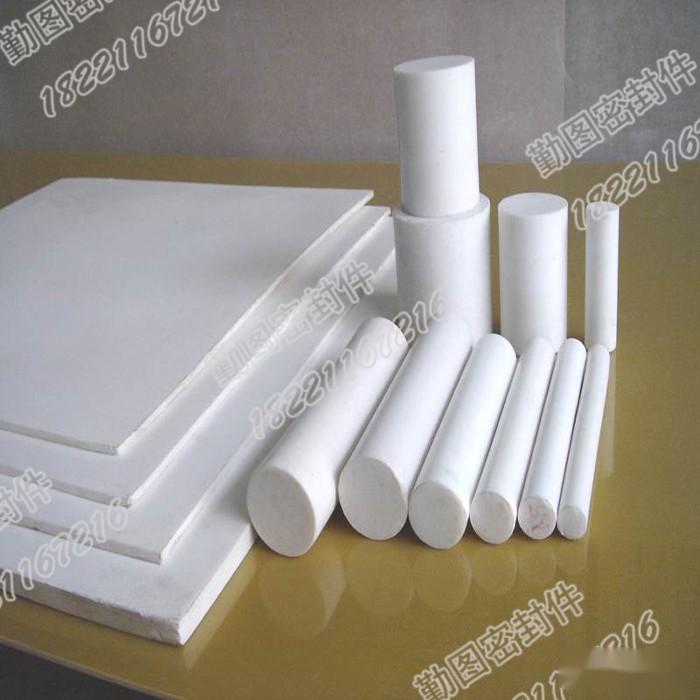Temperature: -20~250℃ (-4~+482°F) Pressure: -0.1~6.4Mpa (full vacuum to 64kgf/cm2) -0.1~6.4Mpa (Full vacuum to 64kgf/cm2)
High temperature resistance - working temperature up to 250°C. Low temperature resistance - good mechanical toughness; even at a temperature drop to -196°C, it can maintain a 5% elongation rate.
Corrosion resistance - exhibits inertness to most chemical drugs and solvents, can withstand strong acids, alkalis, water, and various organic solvents.
Weather resistance - has excellent aging life among plastics. High lubrication - has excellent friction coefficient among solid materials.
Non-stick - has excellent surface tension among solid materials, does not adhere to any substance, and its friction coefficient is extremely small, only 1/5 of polyethylene, which is an important feature of fluorocarbon surfaces. Also, due to the extremely low intermolecular forces of fluorocarbon chains, polytetrafluoroethylene has non-stick properties.
Non-toxic - has physiological inertness, and does not react adversely when implanted in the body for long periods as artificial blood vessels and organs.
Electrical performance - Polytetrafluoroethylene has low dielectric constant and dielectric loss over a wide frequency range, and high breakdown voltage, volume resistivity, and arc resistance. Radiation resistance - poor radiation resistance of polytetrafluoroethylene (104 rads), degradation occurs after exposure to high-energy radiation, and both the electrical and mechanical properties of the polymer decrease significantly. Application - Polytetrafluoroethylene can be processed by compression or extrusion molding; it can also be made into water dispersion for coating, impregnation, or fiber production.
Polytetrafluoroethylene is widely used in the nuclear energy, aerospace, electronics, electrical, chemical, mechanical, instrumentation, building, textile, food, and other industries as a material for high and low temperature resistance, corrosion resistance, insulation, anti-stick coatings, etc. Atmospheric aging resistance: radiation resistance and low permeability: long-term exposure to the atmosphere, surface and performance remain unchanged.
Non-flammability: limiting oxygen index below 90. Acid and alkali resistance: insoluble in strong acids, alkalis, and organic solvents. Oxidation resistance: can withstand the corrosion of strong oxidants. Acid and alkali resistance: neutral. Polytetrafluoroethylene mechanical properties are relatively soft.
Has very low surface energy. Polytetrafluoroethylene (F4, PTFE) has a range of excellent performance: high temperature resistance - long-term use temperature of 200-260 degrees, low temperature resistance - still soft at -100 degrees; corrosion resistance - can withstand aqua regia and all organic solvents; weather resistance - excellent aging life among plastics; high lubrication - excellent friction coefficient (0.04) among plastics; non-stickiness - excellent surface tension among solid materials and no adhesion to any substance; non-toxic - physiological inertness; excellent electrical properties, is an ideal class C insulation material.
Polytetrafluoroethylene material, application - Polytetrafluoroethylene can be processed by compression or extrusion molding; it can also be made into water dispersion for coating, impregnation, or fiber production. Polytetrafluoroethylene is widely used in the nuclear energy, aerospace, electronics, electrical, chemical, mechanical, instrumentation, building, textile, food, and other industries as a material for high and low temperature resistance, corrosion resistance, insulation, anti-stick coatings, etc. Widely used in national defense military, nuclear energy, petroleum, radio, electric power machinery, chemical industry and other important sectors.
Product: Polytetrafluoroethylene rods, pipes, sheets, turning sheets. Polytetrafluoroethylene is a polymer of tetrafluoroethylene.
Coefficient of expansion (25-250°C) 10-12×10-5/°C Polytetrafluoroethylene (PTFE) has very good corrosion resistance and heat resistance, almost resistant to all strong acids, strong oxidants, reducing agents, and various organic solvents, and can be used normally over a wide temperature range, becoming an important material for container lining equipment. The application of FE lining equipment in chemical enterprises with high corrosion resistance requirements is becoming more and more widespread.
















